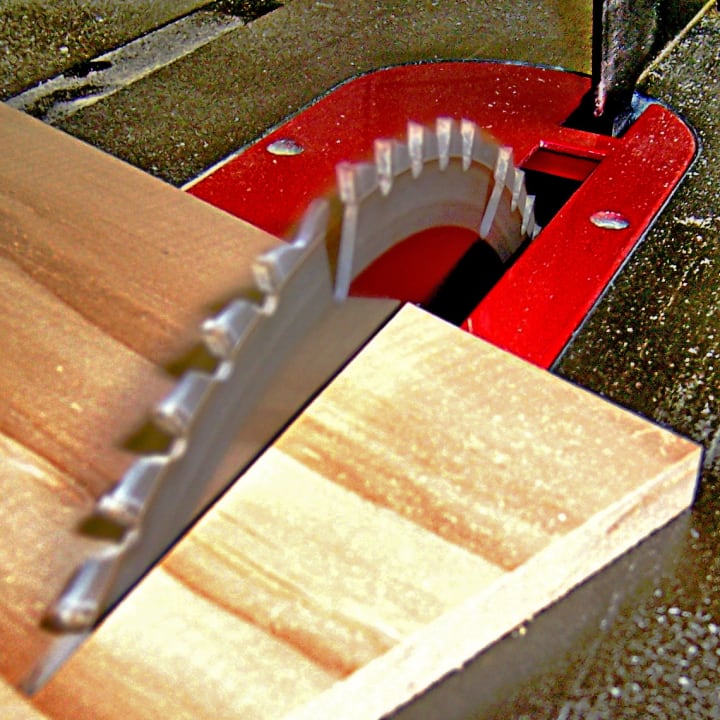7 Essential Power Tools for beginning Woodworkers
Beginner's Guide to Must-Have Basic Tools for Woodworking

Many novice woodworkers look at their budget and wonder if they would be able to afford to purchase an entire shop's worth of power tools to get started. Fortunately, getting started does not require a large financial outlay. A beginning woodworker only needs seven woodworking tools to get started, and the majority of them are inexpensive. A beginner, on the other hand, can handle almost any project using these seven techniques.
1-Circular Saw

Some argue that the circular saw is more of a carpentry tool than a fine woodworking tool, although others disagree. A circular saw may be the most portable simple handheld power tool available. The circular saw, when used with a clamp-on straight-edge, can be just as effective as a table saw and do much of the same functions, like cutting sheet goods like plywood or medium-density fiberboard (MDF). When dealing with wood on a budget, the first portable power tool you can buy is a good circular saw.
2-Power drill

Some may hope to see a cordless drill on this list, but a corded drill is more flexible and efficient when it comes to simple power woodworking equipment. While cordless instruments are more compact, corded drills are less costly and can perform more tasks than cordless drills. When buying a corded power drill, you should think about whether you like a 3/8-inch or 1/2-inch chuck, a keyed or keyless chuck, a straight drill or a hammer drill, and so on. Before making a purchase, research all of the choices.
Click to get access to a complete beginners woodworking kit
3-Jigsaw

A jigsaw is the third basic method for a novice. The user of a jigsaw will cut curved and circular patterns in stock. While a band saw is more precise and can cut thicker stock, a novice can get by with a jigsaw (also known as a saber saw). Choose an orbital-action, corded jigsaw that feels good in your hand and has a simple blade-changing mechanism for flexibility.
4-Random Orbit Sander

A random orbit sander is the fourth most useful simple portable power tool that any beginner can purchase. The random orbit variant uses hook-and-loop fastened sanding disks, while palm sanders are less costly and can use plain sandpaper (cut into quarter sections). Unlike other varieties of sanders, the spontaneous orbit motion does not leave patterned scratches in the workpiece. Of course, make sure your nearest woodworking store has sanding disks in a variety of grits to suit the style you want, as using increasingly finer grits is the secret to proper sanding.
Click to get access to a complete beginners woodworking kit and 16.000 plans
5-Table Saw

It's time to make your first (and most likely most important) big tool purchase once you have the four aforementioned portable power tools in your arsenal and have had time to get familiar with them. Any woodworking shop's heart and soul—the centerpiece around which all of the other instruments are used and organized—is the table saw. The table saw's power is its ability to cut sheet products with precisely straight ends, but it can also cut miters, bevels, and even dado grooves.
You'll want to invest in the best table saw that your budget will allow, as this tool will serve as the heart of your workshop for many years. Take the time to figure out which features are most important to you and then choose the table saw that best suits your budget and requirements.
6-Compound Miter Saw

Following the acquisition of the ideal table saw for your woodshop, the next big purchase to consider is a compound miter saw. A compound miter saw, while not as pricey as a good table saw, is invaluable for cutting angles (beveled, mitered, and compound cuts). A compound saw's motor head can be angled in two directions, allowing you to cut both straight and beveled miters (compound cuts).
For certain beginners, a 10-inch saw would do, but a 12-inch saw will extend the options. Sliding saw heads on some models allow you to cut angles and crosscuts on boards up to 16 inches high.
You'll notice that your circular saw invests more time in the cabinet and your table saw isn't used as much until you've mastered the ability to make sharp cuts using a compound miter saw.
7-Router

A good-quality router is a final tool that any beginner woodworker should have. Routers are great for cutting rabbets and dados, as well as shaping decorative contours on workpieces.
Many routers today come with two distinct bases (a stationary base and a plunge router base). However, most beginners will find that a good stationary base model can do a wide range of tasks—and it can even be placed in a router table if you decide to purchase one. Choose a router with a motor that is at least 2 horsepower.Electronic variable speed controls (larger cutting bits can be used at higher speeds), a soft-start system, and an easy-change bit collet (preferably with the option to use both 1/2-inch and 1/4-inch-shank router bits) are other features to watch for.
About the Creator
Wadie Walker
I've been cultivating a passion for woodworking since 2016, I write about my experiences and opinions through my applications as a furniture and cabinet maker, I also include tools commonly used in woodworking.






Comments
There are no comments for this story
Be the first to respond and start the conversation.